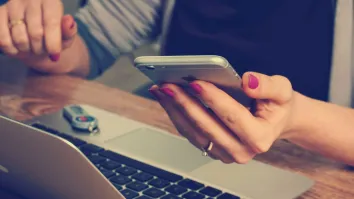
Banks grapple through era of disruption by being the disruptor
Companies are facing not just tech transformations but also shorter skill lifespans for their workforce.
Amidst an era of disruptions– from generative AI to a worsening talent dilemma, and rising costs– one way that banks can stay ahead is not just by aligning with disruption, but by choosing to be the game changer themselves.
Speaking at the Asian Banking & Finance Forum held at Ho Chi Minh City, Vietnam, Bain & Company partner Sen Ganesh enumerated the different “game changers” that is impacting the banking and insurance industry, as well as the different ways that financial institutions are adjusting their strategies to keep up with these disruptors.
“What we're seeing now is that, as the pace of technology has been increasing and developing very quickly, most organizations are having to balance two forces. The first is really around the technical debt that's built up over the last few years. Secondly, we're seeing a lot more pressure on cost,” Ganesh told attendees during his keynote address.
To balance these, FIs have adopted three distinct strategies. One is to be the disruptor themselves.
“Effectively, you abandon legacy and go [to the] greenfield. You build an entirely new stack on the greenfield and then transition the customers across. Sounds very attractive, [but also] incredibly expensive and high risk. Some have tried to do that with digital banks” create an entirely new stack, separate, and then migrate customers across,” Ganesh noted.
Another strategy that banks have adopted is to invest money to overhaul their legacy product processing systems to be leaner and more efficient. The second strategy, and reportedly the most popular, is to focus on creating new digital experiences and what Ganesh called “intelligent” engagement.
“Few want to modernize the entire stack end to end. So, they break down their technology, typically into a series of microservices. These are standalone services that have their own logic, their own data, that enables them to be very scalable,” Ganesh said.
ALSO READ: 60% of commercial banks don’t have women in C-suite roles
Shorter talent relevancy
Ganesh also highlighted the creeping problem of talent” the half-life of a skill is approximately 5 years today, down from 30 years, according to Ganesh.
To counter this, Ganesh advised FIs to adopt a new talent management system, characterised by a “talent delivery system”, with employees deployed to their best use case.
He further noted that workers need to constantly learn, unlearn, and relearn– as employees are now perpetual apprentices.
“Placing your top performers in the most critical roles is crucial. An interesting finding from this research, related to NASCAR teams, showed that if one member of the pit stop team underperformed, the time taken for a pit stop doubled. If two members underperformed, it doubled again. Having the right talent in the right roles is key to success,” Ganesh said.
Keeping employees inspired is another way to make them more productive.
ALSO READ: Empathy deficit erodes customers’ trust in banks
“Lastly, something perhaps underestimated in financial services, is that employees who are inspired are 55% more productive than an average employee. They believe in the company's goals, feel valued, and this leads to higher performance. When you put it together, what we found was that on average, a company could take one person at 100% and create about 102% productivity. That's a decent uplift, but the best companies go from 100% to 144%.” Ganesh shared.
“Most companies focus on hiring better, maybe doing a bit of learning and development, a bit of performance management, benchmarking some compensation. But they often miss out on or underinvest in other factors to drive an inspired and productive workforce,” he added.
Disruptive forces
Ganesh also touched upon two of the factors that are disrupting banking: namely, generative AI and ESG.
Whilst Ganesh recognized the potential of generative AI in opening up new business models and change the way companies can interact with customers, he also noted a plethora of challenges connected to regulation and its overall effectiveness.
Notably, Ganesh said that not all companies will see a significant growth in sales when adopting gen AI: top performing employees won’t see many gains from using gen AI, although it might benefit the “average” and “bottom” performers more.
“If I take my best RM and give them some assistance [with gen AI], I might eke out a productivity increase of about 2%, something in that range. Maybe I can optimize their admin tasks, give them a bit more time to sell. But the reality is, they're good anyway. They're not actually going to sell that much more,” Ganesh noted.
ALSO READ: Game changer: Gen AI can transform how banks tackle regulation and risk
“Where we see the biggest impact is on the so-called average performer and the tail of underperformers, where you can uplift their ability to sell and their productivity quite significantly,” he added.
The bigger challenge for gen AI adoption is the explainability of their models. “You need to be able to explain the basis on which you make a recommendation to your client, and that's quite hard with these large language models. You train a model, give it an input, it gives you an output, but you don't necessarily know how it came to that conclusion or recommendation,” Ganesh said, noting that this was one of the reasons why organisations are hesitant to roll out gen AI services.
“If a regulator asked you to justify why a certain decision was made, and you're unable to explain it because the AI's decision-making process is opaque, that could be a significant issue. This is particularly relevant if there's an accusation of bias towards a certain race or demographic profile,” he warned.
As for ESG, Ganesh and Bain & Company see much opportunity for growth especially in APAC.
“There's a lot of focus on financing decarbonization, adopting new technologies, and improving supply chains. More companies are also looking to offer value-added services, such as collaboration for data insights, advisory services, and platform-as-a-service offerings that could benefit SMEs,” Ganesh said.
ALSO READ: Less than 10% of global energy financing went to renewables: study
He also noted a growing interest in helping with carbon offsets, with banks providing exchange-based services, amongst other initiatives.
“Whilst ESG is a broad topic, the climate aspect of ESG, in particular, holds a huge opportunity for both the banking and insurance industries in our region. We're observing a shift towards this area, which is becoming increasingly developed and sophisticated,” he concluded.


















 Advertise
Advertise








